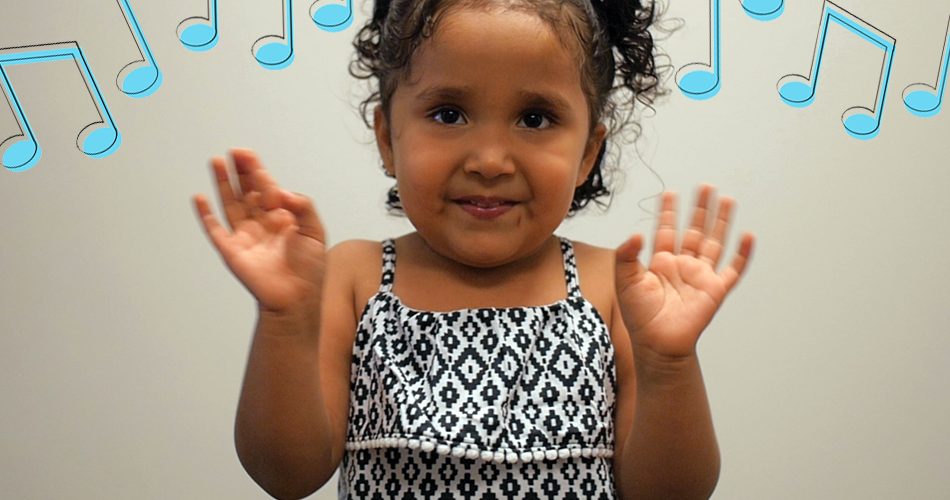The right music can change the mood of a learning environment. Music can invite children to get active and silly — or slow down and relax. Songs can also be effective in focusing children’s attention during transitions or when introducing new ideas. Music can act as a powerful tool that supports language and literacy development.
So how can you support children’s language and literacy through music? Here are a few ideas:
Weave music informally throughout the day
Whether you work with infants, toddlers or preschoolers, songs and chants throughout the day support a variety of language skills. Embed these opportunities throughout the day for maximum impact.
- Sing a song while washing hands. (As a bonus, this can help children learn how long to scrub their hands to get rid of germs!) Here are a few suggestions.
- Make up silly songs during diapering, dressing and feeding. For inspiration, check out one dad’s mealtime remixes.
- Lead children in a classic “clean up song” and other transition songs between activities.
- When children dance, sing or make up songs, join with them.
Sing a book
In addition to reading story books with children, choose books that you can sing with children. Click here for a few suggested titles.
Build vocabulary with music
- Singing songs with corresponding motions helps children make connections and form new vocabulary. “Head, Shoulders, Knees and Toes,” “I’m a Little Teapot” and the “Hokey Pokey” are a few classics.
- Select songs that correspond to the topic or unit you are exploring. For example, during a unit on winter, introduce songs about winter weather and clothing to help children hear and practice new vocabulary words.
Introduce musical concepts and vocabulary
Help children understand new musical concepts by pointing out the features of music. As children pay attention to and listen for tempo, dynamics and melodies, they develop the ability to differentiate between sounds — a skill that is critical to reading.
- Point out the tempo (speed) of a piece of music.
- When leading a music and movement activity, invite children to choose the speed. The song, “Head, Shoulders, Knees and Toes” is a hit when done at a fast tempo.
- Draw children’s attention to the different pitches or tones on a xylophone.
- When leading a song, allow a child to choose whether the group will sing along in a low pitch or high pitch. Using animals as an example is a fun way to think about pitch. You can ask, “Birds tweet high and cows moo low, which way should we go?”
Help children become aware of the sounds and units of language through intentional musical activities.
- Orient children to beginning and end sounds with musical games like “Willaby Wallaby Woo” and “The Name Game.”
- Call attention to rhyming words in songs. For example, when singing “I Had a Little Turtle,” point out the rhyming words “Tim” and “swim.”
- Invite older preschoolers to experiment with rhyming words. For example, ask children to think of a rhyming word for a turtle with a different name. “What if the turtle was named Vance? What could he do that would rhyme?”
These are just a few ideas of how you can use music to help children learn sounds, words and patterns of language, setting them up for success in reading and writing.
At Quality First, we love to hear from you! Share your new and innovative practices by emailing us at qualityfirst@firstthingsfirst.org
